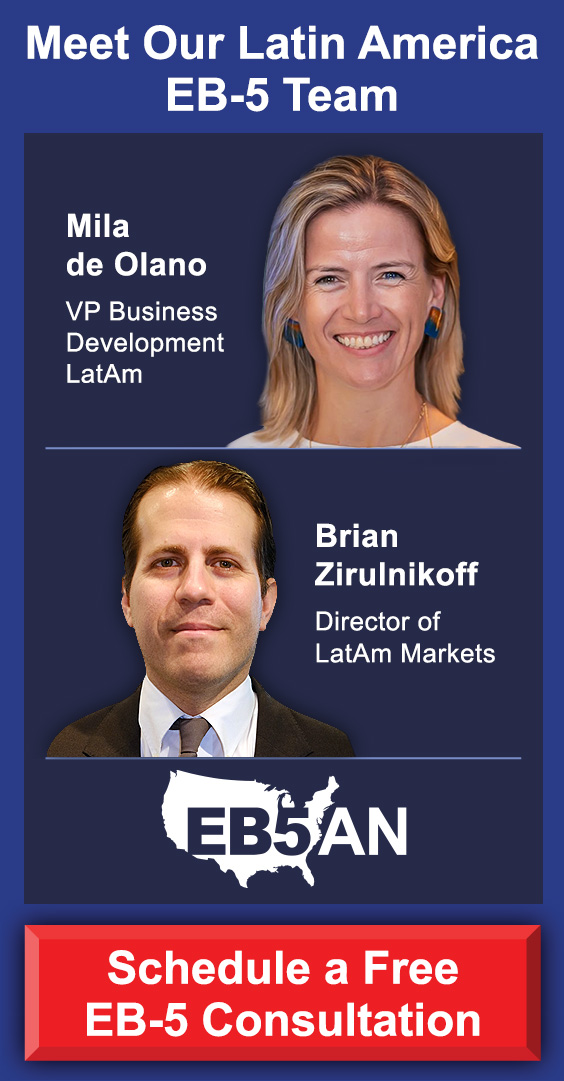In the often complex and evolving world of U.S. immigration, the EB-5 Immigrant Investor Program has recently delivered welcome news: the approval rate for Form I-526E petitions has surged to an unprecedented 97%, according to recent data from U.S. Citizenship and Immigration Services (USCIS).
At first glance, this statistic suggests that the EB-5 process is smoother, safer, and more accessible than ever before. A high approval rate is certainly good news, but it doesn’t tell the whole story.
For investors considering a U.S. Green Card through the EB-5 program, understanding what this approval rate reflects is essential for making informed, strategic decisions.
Understanding the Role of Form I-526E
Why Approval Rates Have Reached Record Highs
The Rural vs. Urban Divide
What the Approval Rate Doesn’t Guarantee
- Processing Speed Is Not Uniform
- Approval Is Not a Guarantee of Success
- Not All Regional Centers Are Created Equal
Navigating the EB-5 Landscape Today
Beyond the Approval Rate
Understanding the Role of Form I-526E
Form I-526E is the foundational step in an EB-5 investor’s immigration journey. Filed with USCIS, this petition declares the investor’s intent to obtain permanent residency by making a qualifying investment, typically $800,000 in a targeted employment area (TEA) or $1,050,000 outside it, in a U.S. new commercial enterprise. It also establishes the legal source of the investor’s funds and confirms their alignment with an approved EB-5 project.
Once the I-526E is approved, investors can obtain a conditional Green Card and begin a two-year period during which their investment must create at least ten full-time U.S. jobs. Thus, approval of this petition is a critical milestone, paving the way to permanent residency.
Why Approval Rates Have Reached Record Highs
The current spike in approval rates is not accidental. It’s a direct result of structural reforms introduced by the EB-5 Reform and Integrity Act of 2022 (RIA), a comprehensive legislative overhaul that standardized USCIS procedures and brought greater clarity to an often inconsistent adjudication process.
Before the RIA, EB-5 adjudications were governed by a mix of regulatory guidelines and internal policies. This created substantial variability in how petitions were reviewed and whether they were approved. Investors and attorneys alike often found themselves navigating unclear expectations and sudden shifts in interpretation.
The RIA established clearer evidentiary standards, particularly around lawful source of funds, and introduced mandatory pre-approval of projects through Form I-956F. This form requires EB-5 projects to submit detailed loan or equity agreements, a comprehensive business plan and an economic impact analysis, ensuring that investors enter projects already vetted by USCIS.
With these reforms in place, both investors and their legal teams are better equipped to submit strong, compliant petitions. The result? An industry-wide increase in I-526E petition quality, and consequently, an unprecedented approval rate.
The Rural vs. Urban Divide
Beneath the high-level statistic, however, lies a striking disparity in how petitions are being adjudicated. Recent FOIA data covering April 2022 through January 2025 reveals that rural EB-5 petitions are being processed and approved at a much faster rate than their urban counterparts.
Although more urban petitions were filed initially, USCIS has shifted its focus. In the 24-month period ending January 2025:
- Only 1.5% of urban petitions were adjudicated.
- By contrast, 24% of rural petitions were processed in the same period.
- USCIS processed thirteen rural petitions for every urban petition during this time.
This shift is partly driven by the RIA’s introduction of priority processing for rural projects, which incentivize USCIS to prioritize rural filings. It also reflects a growing investor awareness that rural projects not only enjoy faster processing but are less likely to face future visa backlog risks.
The key takeaway? The 97% approval rate is largely driven by rural petition success, and may not reflect the slower-moving urban EB-5 process.
What the Approval Rate Doesn’t Guarantee
While the 97% figure is promising, it does not mean the EB-5 process is risk-free or universally efficient. Investors should be cautious not to misinterpret approval data as a blanket endorsement of all projects or strategies.
Processing Speed Is Not Uniform
The first and most important caveat is that approval speed varies dramatically between petition types. While rural petitioners are seeing adjudications within 8–10 months, many urban investors remain stuck in processing limbo. USCIS has made rural petitions a priority, leaving a growing urban backlog in its wake.
For investors eyeing a specific timeline for obtaining a Green Card, this discrepancy can have serious implications.
Approval Is Not a Guarantee of Success
An I-526E approval simply means that USCIS accepts the petition’s basic compliance with the program’s rules. It does not mean that the project will create the required jobs, that it will be economically successful, or that the investor’s capital will definitely be returned.
The true test of a project’s viability comes later, during the I-829 petition stage, when investors must prove that job creation actually occurred. Poorly performing projects can still result in I-526E approvals, only to leave investors stranded when it matters most.
Not All Regional Centers Are Created Equal
Even with the introduction of Form I-956F for project vetting, the track record of the regional center remains a crucial variable. If a regional center has a history of denials or compliance issues, that risk extends to all of its projects, regardless of form approval.
Investors should look beyond the petition approval rate and scrutinize a regional center’s performance, history of I-956F approvals, and responsiveness to USCIS requests.
Navigating the EB-5 Landscape Today
Given the current environment, several key insights emerge for prospective EB-5 investors:
- The EB-5 program is more stable and predictable than in years past, thanks to the RIA’s reforms. For serious investors, the high I-526E approval rate is a real sign of progress.
- Rural investments currently offer the best balance of speed, priority, and visa availability. For investors seeking quicker entry and fewer delays, this category has become increasingly attractive.
- Thorough due diligence remains essential. Choosing a project with an approved I-956F form, backed by a reputable regional center with a successful track record, can help minimize risk.
- Approval is only the beginning. Investors should maintain realistic expectations about the overall immigration process, including job creation requirements and capital return timelines.
Beyond the Approval Rate
The 97% approval rate for EB-5 petitions represents a dramatic shift toward greater clarity and consistency in a program once known for its complexity. But it is not a guarantee of a smooth journey or a successful outcome.
For investors, the real opportunity lies in using this favorable environment to make informed, well-researched decisions, especially when selecting rural projects and evaluating the integrity of regional centers.
In the end, the high approval rate tells us that the path is more clearly marked than ever before. But as always, it’s still up to each investor to choose the right direction.
At EB5AN, transparency is of the utmost importance to us. EB5AN has helped more than 2,700 families from 70+ countries become lawful permanent residents of the United States. Our team has more than a decade of experience and offers clients first-rate, low-risk EB-5 regional center projects with a 100% USCIS project approval rate.
If you would like to know more about your EB-5 investment options, book a free call with our expert team today.










